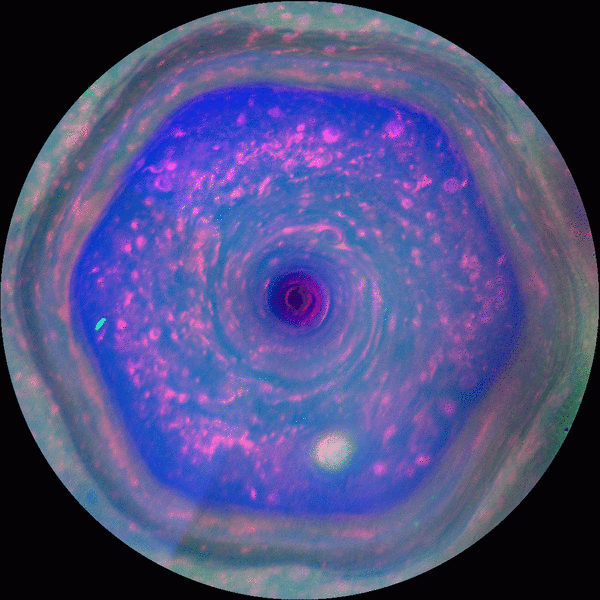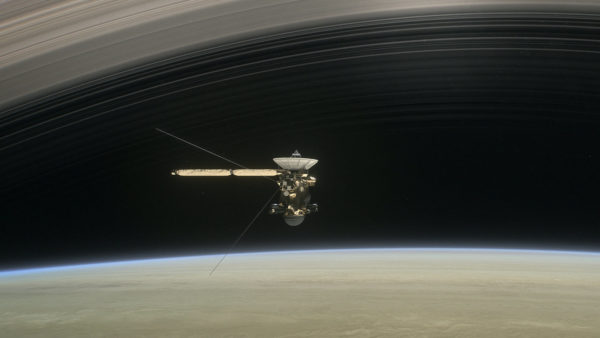Cassini Probe Enters Its Grand Finale At Saturn
Last week, the Cassini probe began the final phase in its nearly 20 years of exploring Saturn and its moons. Dubbed the Grande Finale. Cassini will undertake a daring set of orbits through September that are like a whole new mission. Following a final close flyby of Saturn’s moon Titan, Cassini will leap over the planet’s icy rings and begin a series of 22 weekly dives between the planet and the rings.
Cassini will skirt the very inner edge of the rings; at other times, it will skim the outer edges of the atmosphere. The spacecraft will get up close and personal with Saturn’s atmosphere on September 15 when it plunges in, sending back data up to the fiery end as it burns up like a meteor. Destruction in Saturn’s atmosphere was also chosen to end the mission to protect moons of Saturn that could have conditions suitable for life.
Cassini is a 6.7-meter by 4-meter science machine. Instruments aboard include spectrometers covering infrared, ultraviolet and visual ranges, Radars as well as plasma and dust analyzers, and a magnetometer. When launched from Cape Canaveral in 1997, the Plutonium-238 in its three radioisotope thermoelectric generators (RTGs) were cranking out 885 watts of power for those instruments. By mission’s end, that will be reduced to 633 watts.
But that’s not why the mission is coming to an end. After nearly 7 years en route, and 13+ years at Saturn (including 4-year primary mission, and 3 extensions) Cassini is running out of fuel. More than half the mass of the probe on launch day was hypergolic fuel for its R-4D rocket engine, originally designed for the Apollo Lunar Landers and still used today on Japanese and European cargo vessels visiting the International Space Station.
Cassini’s tag-along-probe Huygens provided the first in-situ measurements the atmosphere of Saturn’s largest moon Titan’s, revealing a Nitrogen rich stratosphere, the only one in the solar system outside Earth’s. Titan continued to be revealed as the only other place in the solar system with stable liquid on its surface. Precipitation there and the resulting rivers, lakes, and seas are composed of methane, though.
The probe snapped images of water-ice volcanoes on Enceladus and a subsurface ocean on the Saturnian moon.
Cassini was there in 2010 to watch Saturn’s relatively tranquil atmosphere was overtaken by a planet-encircling storm which behaved much like a hurricane here on Earth. The storm is believed to have been fueled by a sudden 150ºF temperature spike in Saturn’s stratosphere, the greatest increase observed in our solar system. But as the head of the 190,000-mile wide storm reached its tail, the storm sputtered out.

six-sided jet stream at Saturn’s north pole known as “the hexagon”. There is a massive hurricane tightly centered on the north pole, with an eye about 50 times larger than the average hurricane eye on Earth.
Fantastic images have been captured of Saturn’s polar regions including the long-lived hexagonal-shaped polar vortex in the north and more hurricane-like storms at both poles. The driving forces of each remain a mystery.
So, over the next few months, keep an eye and ear out for more from this mission as it completes its grand finale.
Category: ALL POSTS, Spacey Stuff



















